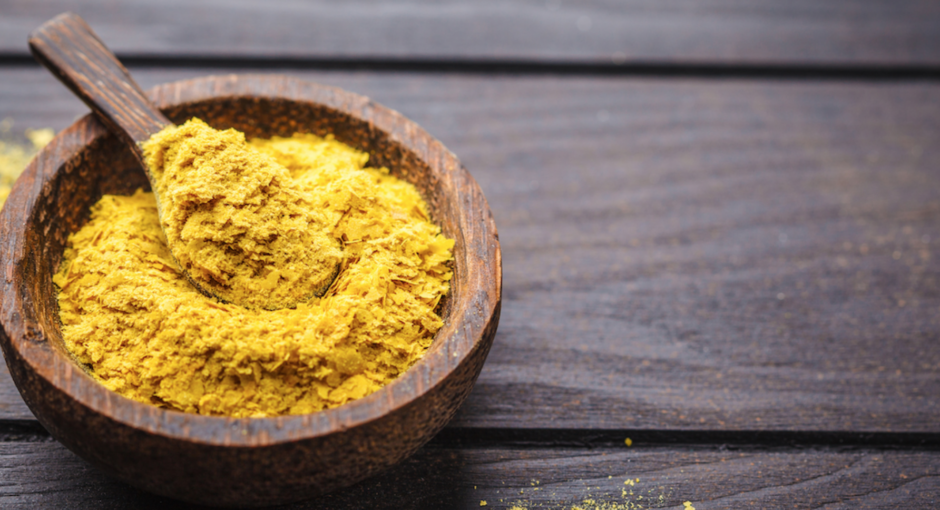In my article, How To Get Healthy Physically, I discussed the first of four factors that contribute to optimal health:
The optimal diet is dense in nutrients.
I discussed macronutrients. Macronutrients are: proteins, fats and carbohydrates.
This article is a continuation of that subject, I will be discussing micronutrients. Micronutrients are: vitamins and minerals.
In future articles I will discuss topics 2-4 of the optimal diet:
- The optimal diet is dense in nutrients.
- The optimal diet considers the bioavailability of food.
- The optimal diet uses the most efficient fuel source.
- The optimal diet utilizes intermittent fasting.
The Optimal Diet is Dense in Nutrients (continued)
Micronutrients
A. Vitamins
Vitamins are ORGANIC compounds that can be broken down into two categories, water-soluble and fat-soluble.
- Water-soluble
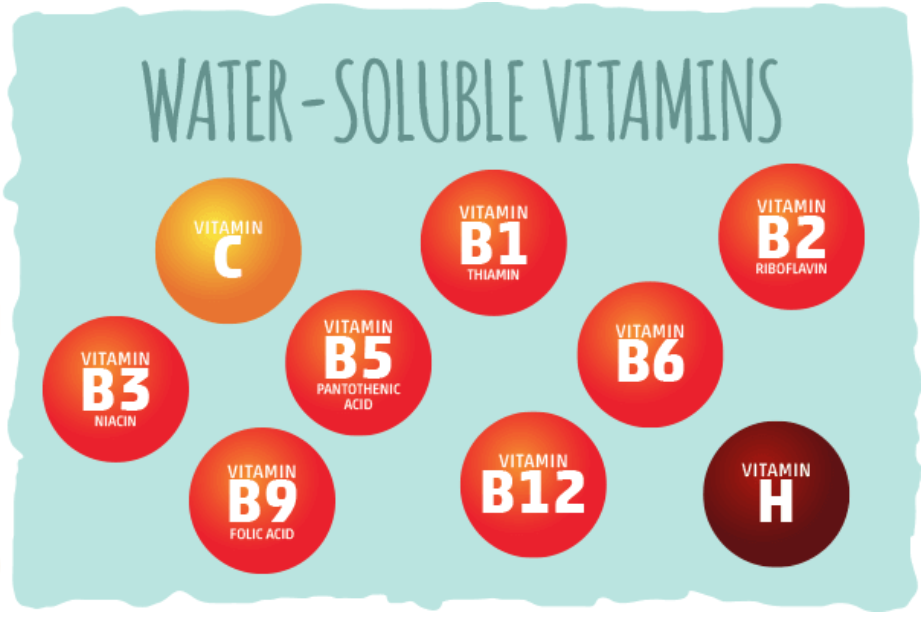
Water-soluble vitamins dissolve in water and are available to the body immediately. Since they are not stored in the body, they need to be replenished on a regular basis. Excess water-soluble vitamins are excreted through urine and rarely reach toxic levels.
Water-soluble vitamins are: vitamin C and the eight B vitamins: B1 (thiamin), B2 (riboflavin), B3 (niacin), B5 (pantothenic acid), B6 (pyridoxine), B7 (biotin, also called vitamin H), B9 (folate and folic acid), and B12 (cobalamin).
Water-soluble vitamins provide the following health benefits:
Vitamin C – Complex
Vitamin C is central to iron absorption and collagen synthesis. It aids in wound healing and bone formation while improving overall immune function.
Vitamin C is found in: most fruits and vegetables, especially citrus fruits, strawberries, peppers, potatoes, beef, pork and lamb.
Vitamin B1 – Thiamine
Vitamin B1 helps to release energy from foods and is important in maintaining nervous system function.
Vitamin B1 is found in: rice, whole-grain bread, meat, fish and nutritional yeast.
Vitamin B2 – Riboflavin
Vitamin B2 helps promotes good vision and healthy skin and is also important in converting the amino acid tryptophan into niacin.
Vitamin B2 is found in: dairy products, lean meats, eggs, leafy green vegetables, nuts, legumes and nutritional yeast.
Vitamin B3 – Niacin
Vitamin B3 aids in digestion, metabolism, and normal enzyme function as well as promoting healthy skin and nerves.
Vitamin B3 is found in: dairy products, poultry, fish, lean meats, nuts, legumes, eggs and nutritional yeast.
Vitamin B5 – Pantothenic Acid
Vitamin B5 plays a major role in extracting energy from fats and protein. It also helps modify certain proteins and produce cholesterol, sex and stress hormones, and red blood cells.
The word “pantothenic” comes from the Greek “pantou,” meaning everywhere. Nearly all foods contain small quantities of pantothenic acid, so deficiencies in this vitamin are very rare.
Vitamin B5 is found in: organ meats, eggs, fish and shellfish, poultry, legumes, whole grains, dairy products, cruciferous vegetables, avocados, mushrooms and nutritional yeast.
Vitamin B6 – Pyridoxine
Vitamin B6 aids in protein metabolism and the production of red blood cell, insulin, and hemoglobin.
Vitamin B6 is found in: fish, meat, beans, legumes, nutritional yeast and many vegetables.
Vitamin B7 or Vitamin H – Biotin
Vitamin H is a part of the vitamin B-complex, and is also known as vitamin B7.
Vitamin B7 helps release energy from carbohydrates and aids in the metabolism of fats, proteins, and carbohydrates from food.
Vitamin B7 is found in: egg yolk, oats, wheat germ, white mushrooms, spinach, brie cheese, milk, pork, carrot, apple, tomato, beef, chicken, lettuce and nutritional yeast.
Vitamin B9 – Folate and Folic Acid
Vitamin B9 is a key component in cell replication and growth. It is important for rapidly growing cells, such as those in the fetus, red blood cells, and cells in our immune system.
Folate is the naturally occurring form of vitamin B9 that is found in foods. Folic acid is the synthetic form used in commercially available supplements and fortified foods.
Vitamin B9 is found in: organ meats, leafy green vegetables, oranges and strawberries, legumes and whole grains.
Vitamin B12 – Cyanocobalamin
Vitamin B12 aids in the production of normal red blood cells as well as the maintenance of the nervous system.
Vitamin B12 is found in: meats, poultry, seafood, eggs, and dairy products, but not in plant-based foods so vegans and vegetarians are at risk for vitamin B12 deficiency.
2. Fat-Soluble Vitamins
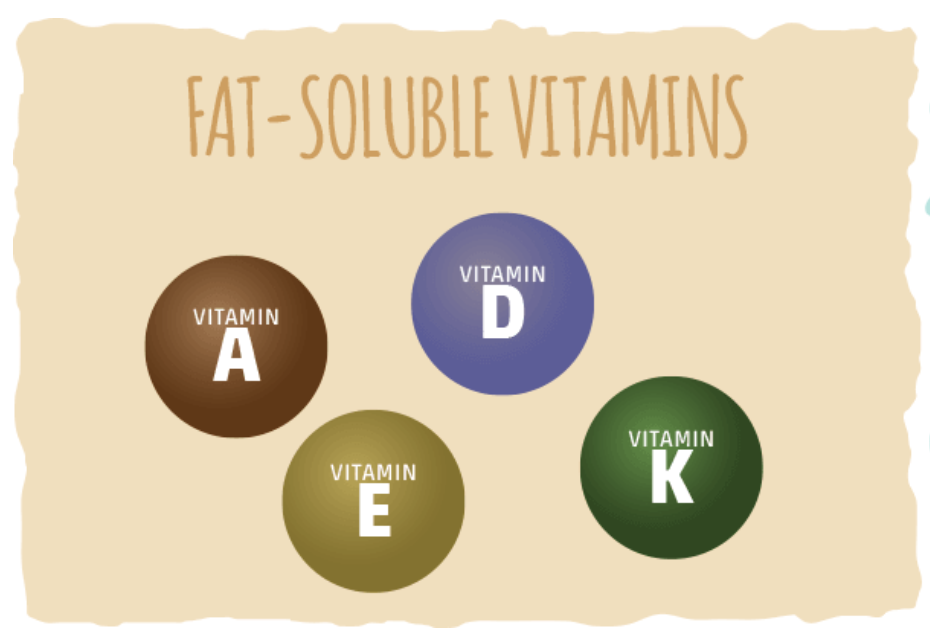
Fat-soluble vitamins dissolve in fat and are stored in the liver and fat cells. Because fat-soluble vitamins are not readily excreted, they can accumulate to toxic levels if taken in excess. Where a well-balanced diet can’t cause toxicity, overdosing on fat-soluble vitamin supplements can.
Fat-soluble vitamins are: vitamin A, vitamin D, vitamin E and vitamin K.
Fat-soluble vitamins provide the following health benefits:
Vitamin A
Vitamin A is integral to bone formation, tooth formation, and vision. It contributes to immune and cellular function while keeping the intestines working properly.
Vitamin A is found in: butter, egg yolks, fish, liver, meats, whole milk, dark green vegetables, yellow, and orange fruits and vegetables.
Vitamin D
Vitamin D aids in the development of teeth and bone by encouraging the absorption and metabolism of phosphorous and calcium.
Vitamin D is found in: fish-liver oils, fatty fish, mushrooms, egg yolks, liver. For most people, daily exposure to the sun is sufficient to maintain healthy levels of vitamin D.
Vitamin E
Vitamin E is an antioxidant that helps fight infection and keeps red blood cells healthy.
Vitamin E is found in: nuts, seeds, vegetable oils, cereals, and dark green leafy vegetables.
Vitamin K
Vitamin K is central to blood clotting and also keeps bones healthy.
Vitamin K is found in: dark green leafy vegetables, cabbage, cauliflower, and broccoli.
B. Minerals
Minerals, like vitamins, are necessary for the proper functioning of our bodies.
Minerals are INORGANIC compounds that can also be broken into two categories, macrominerals and microminerals.
1. Macrominerals
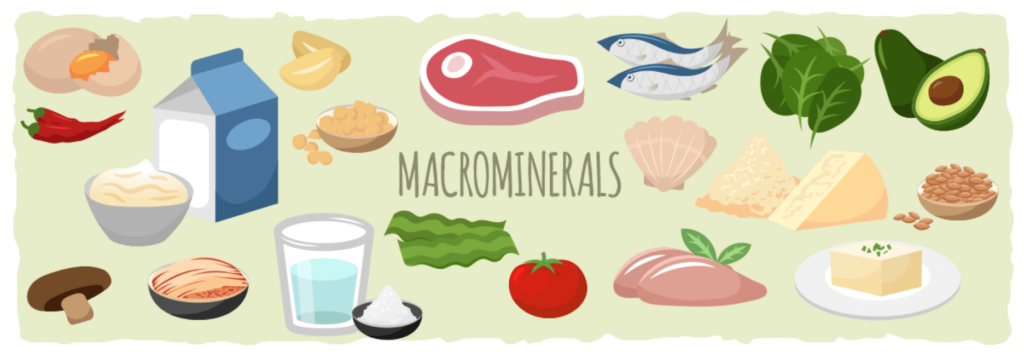
Macrominerals are used by the body in large amounts. There are 6 macrominerals. They are: calcium, chloride, magnesium, phosphorus, potassium, and sodium.
Macrominerals provide the following health benefits:
Calcium
Calcium is necessary for strong bones and teeth. It is needed for blood clotting, normal nervous system and muscle function.
Calcium is found in: milk, cheese, yogurt, nuts, and green leafy vegetables.
Chloride
Chloride is needed to create gastric juices. Chloride also works with sodium to help keep your body fluids in balance.
Chloride is found in: table salt (sodium chloride), celery and tomatoes.
Magnesium
Magnesium is necessary proper muscle contractions and nerve impulses. It’s also necessary for blood sugar control, regulation of blood pressure, and maintaining healthy strong bones.
Magnesium is found in: nuts, seeds, whole grains, legumes dark green vegetables, yogurt, salmon, bananas, and potatoes.
Phosphorus
Phosphorus is important for bone growth and normal cell membrane function. It works with B-complex vitamins to convert the foods you eat into energy.
Phosphorus is found in: meat, nuts, seeds, legumes and dairy products.
Potassium
Potassium works with magnesium for normal nervous system function, muscle contraction.
Potassium is found in: bananas and potatoes, legumes, milk, nuts, and meats.
Sodium
Sodium intake is important for regulating blood pressure.
Sodium is found in table salt.
2. Microminerals
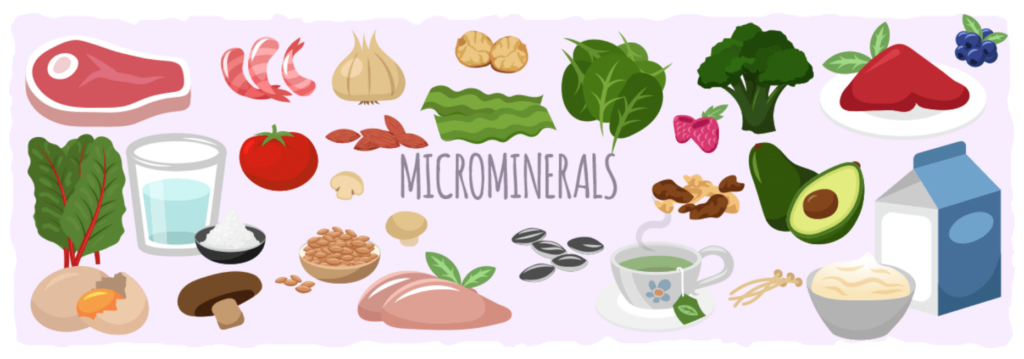
Microminerals are used by the body in very small amounts.
There are 9 microminerals used by the body, they are: chromium, copper, fluoride, iodine, iron, manganese, molybdenum, selenium and zinc.
Microminerals provide the following health benefits:
Chromium
Chromium is necessary for healthy metabolism and storage of sugar and starch. It enhances the effects of insulin, a hormone that regulates the amount of glucose in your blood.
Chromium is found in: meat, whole grains, broccoli, potatoes, apples, bananas, garlic, and basil.
Copper
Copper is needed for strong bones and healthy blood vessel walls, it’s a component of some antioxidant reactions and is necessary for your body to produce energy.
Copper is found in: organ meats, shellfish, nuts, seeds, cocoa, and whole grain products.
Fluoride
Fluoride helps keep your bones and teeth strong because it promotes remineralization of those tissues.
Fluoride is found in: Natural sources of fluoride are found in tea and seafood. Fluoride should not be consumed in large amounts. Avoid fluoride in drinking water and fluoridated dental products.
Iodine
Iodine is needed for normal thyroid gland function. It’s also needed for immune system function and breast health.
Iodine is found in: table salt and seafood.
Iron
Iron is an essential part of proteins called hemoglobin and myoglobin. Hemoglobin is found in red blood cells and makes it possible to transport oxygen from your lungs to the organs and other tissues. Myoglobin is similar to hemoglobin, except that it carries oxygen to muscle cells.
Iron is found in: organ meats, muscle meat, poultry, fish, legumes, and dark leafy greens.
Manganese
Manganese is involved in the formation of bone and is needed for wound healing. It’s essential for the production of enzymes involved in protein, cholesterol, and carbohydrate metabolism.
Manganese is found in: pineapple, pecans, almonds, spinach, kale, oats, brown rice, raspberries, strawberries, garbanzo beans, whole wheat bread and black pepper.
Molybdenum
This essential mineral plays many roles throughout the body. For example, molybdenum serves as a catalyst for enzymes that detoxify our bodies, protect us from cancer, and decrease inflammation.
Molybdenum is found in: a wide variety of plant foods, especially legumes and nuts.
Selenium
Selenium has antioxidant properties and is used to protect the cells in your body. It is also essential for healthy thyroid function. It’s also critical to reproduction and DNA synthesis.
Selenium is found in: many plant-based foods such as whole grains, nuts, seeds, and legumes.
Zinc
Zinc is used in many different chemical reactions and is a major component of your immune system. It is needed to taste food and smell all the various things around you.
Zinc is found in meats, seafood, and most other foods that are high in protein. Oysters are the go-to zinc source. They contain more zinc than any other food.
Conclusion
In this 2 part series on How To Get Healthy Physically, we’ve been talking about how an optimal diet is nutrient dense.
We’ve been talking about nutritionally dense MACRONUTRIENTS (proteins, fats and carbohydrates), and nutritionally dense MICRONUTRIENTS (vitamins and minerals).
But if we eat properly you’ll notice that our “micros” are in our macros”.
What I mean by that is if we eat nutritionally dense macronutrient foods like: eggs, organ meats, meat, poultry, seafood, nuts, seeds, and low carb vegetables, our micronutrients will already be in our food— we won’t need to supplement.
Is supplementation bad? No, not necessarily. But we should understand the difference between whole food supplements and synthetic supplements.
Whole Food Vitamins
Vitamins in their natural state always exist as living complexes with specific synergistic cofactors, enzymes, phytonutrients and organic mineral-activators, and never as isolated single factors.
For example, the Vitamin C complex is made up of 4 factors:
- Ascorbic Acid (outer shell)
- Biflavonoid Complexes
- Vitamins P, K and J
- Tyrosinase (Copper enzyme)
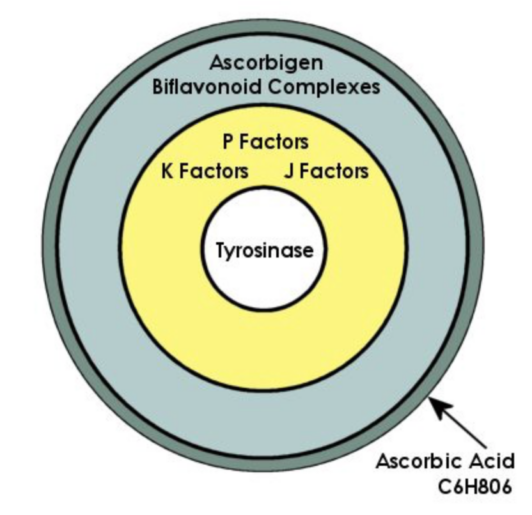
Synthetic Vitamins
Whereas the synthetic version of vitamin C consists of a single factor— ascorbic acid. Taking vitamin C in the form of ascorbic acid would be like eating only the shell of an egg or the peel of a banana.
Synthetic means that a chemist has reconstructed a vitamin molecule by chemically combining molecules from other sources.
Healthy diets only use whole food vitamins.
A whole food version of a fat-soluble vitamin would be cod liver oil. Cod liver oil is high in vitamin A, D and E. The only thing you’d need to add is a whole food vitamin K.
A whole food version of a water-soluble vitamin would be an Acerola cherry powder for vitamin C and nutritional yeast for vitamin B. Nutritional yeast contains almost all of your B vitamins and some minerals: vitamin B1, B2, B3, B5, B6, B7, iron, potassium, zinc, selenium and molybdenum.
In my next article, The Optimal Diet Considers the Bioavailability of Food. We’ll discuss what bioavailability is and why it’s the next step in an optimal diet.

